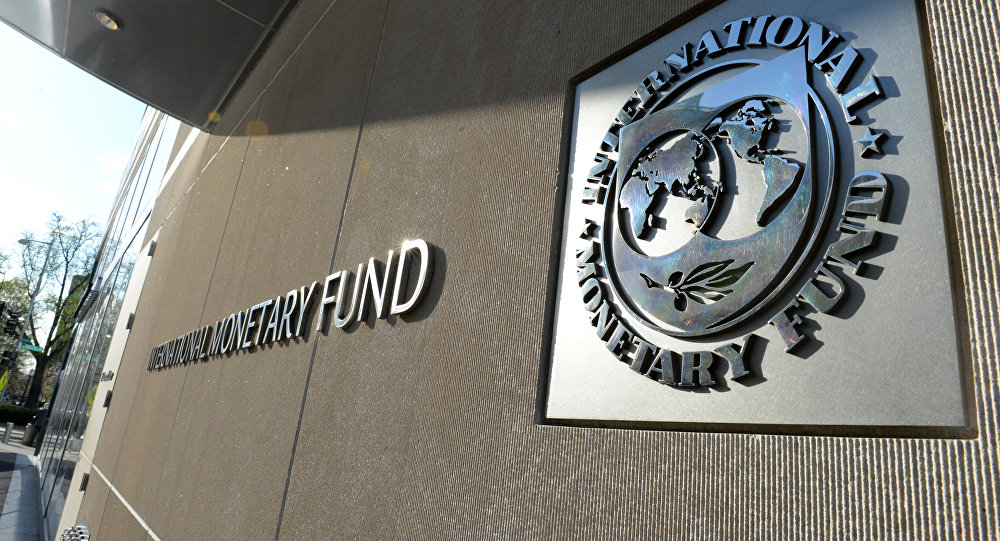- Forecasts 2.5% growth for Nigeria in 2020
The International Monetary Fund (IMF) has said Nigeria’s debt-to-Gross Domestic Product (GDP) ratio, which currently stands at 28 percent, is still below the average in Africa, despite the fact that the country’s debt level has risen.
It also reiterated that the revenue-to-GDP ratio in the country remains low and urged the federal government to increase its drive to create more jobs and enhance fiscal consolidation.
IMF Senior Resident Representative and Mission Chief for Nigeria, Mr. Amine Mati, said this yesterday in Lagos at the public presentation of the ‘Fall 2019,’ a Regional Economic Outlook for Sub-Saharan Africa.
The Debt Management Office had recently revealed that out of Nigeria’s total debt profile of N25.7 trillion as of June 2019, external borrowing accounted for about 32 percent while 68 percent was from domestic borrowing.
But Mati noted that even though Nigeria’s debt has increased, the level was way below the average for the region.
“Even if we include the Central Bank of Nigeria’s overdraft and others, we are talking about a debt-to-GDP ratio that doesn’t go beyond 27 or 28 percent to GDP, and that is including AMCON overdraft, etc,” he explained.
Commenting on the need for fiscal consolidation, he said: “For resource-intensive countries and the non-resource intensive countries, one thing that is common is that when there is trade shock, they react. So, you lose revenue and debts go up. In most countries, you would see debt is about 50 percent to GDP and has increased since 2016 in all cases.
“But what is new is that most of the countries are back on a sustainable path and most countries have plans to reduce debt through fiscal consolidation and have seemed to have stabilized.
“The three largest countries that are driving Sub Saharan growth are Angola, South Africa, and Nigeria. Angola has a negative growth; South Africa has a growth below one percent and Nigeria growing between 2 and 2.5 percent, which is still on the negative per capita growth.
“Nigeria in the first three quarters, the numbers that came out was at 2.2 percent and our forecast of 2.3 percent for the year is still on track depending on how agriculture, ICT perform.
“But the average for the region is 3.2 percent. So, 3.2 percent was in 2019, which is the same growth rate as 2018. Therefore, in 2020 for the region, we project 3.6 percent.
“Nigeria is still on 2.3 percent for 2019, but for 2020 we project a growth of 2.5 percent. So, it is still not growing as fast as others for a variety of reasons, including some of the structural reforms and others but it is picking up.”
On what could affect Nigeria’s outlook, he said it would be mostly affected by external factors.
“We had a tightening of global markets at some point, which also reduced some flows and investments, but one I need to point out is the risk to global trade tensions. With trade tension between America and China, export growth of the region has gone down.
“And the volume of trade for the region as a whole and globally has gone down almost to zero. So whatever happens externally will also impact Africa. The demand is down but for countries like Nigeria, that depend on natural resources, lower demand for oil would impact the price also,” he added.
In addition, he stressed the need for African countries to prioritize job creation, saying 20 million people would be joining the job market in sub-Saharan Africa.
“And these are new jobs that need to be created through structural reforms and whatever reforms are being pursued.
“So far we have been able to create only 10 million jobs so we need to do more because 10 million new jobs need to be created going forward,” he stated.
On his part, the Managing Director, Financial Derivatives Company and a member of the President Buhari’s Economic Advisory Council, Mr. Bismarck Rewane, who also spoke at the forum, said: “We don’t have a debt crisis, we have a revenue problem but there are also other problems such as poverty, productivity. So, it is not if we have a debt or revenue problem. Also, what we use our revenue for is also important.
“So the government expenditure and the government investment multiplier are much lower than the private sector multiplier and the difference between the flow of wealth and the stock of wealth is a different story.
“The important thing is to be aware and doing nothing would have a major consequence. And I think we are in that stage of awareness and there is a sense of urgency and then there is action-taking. There is a beaker of hope at the end of the tunnel.”
Source: THISDAY











